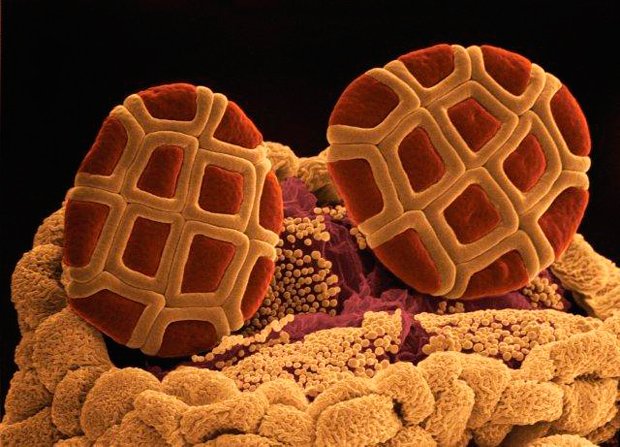The microscopic world of pollen

POLLEN IS OFTEN A dirty word, especially around springtime. But while these tiny grains have a bad reputation for causing hay fever and itchy eyes, they play an important part in the survival of ecosystems.
The complex, perfectly orchestrated interaction between flora and an army of pollinators – bees, insects, birds and animals – is integral in plant reproduction. And it’s a phenomenon scientists are grappling to better-understand.
“We still know so little about our environment. It really is a race against time to get the information we can,” says Dr David Lovell, co-leader of the CSIRO’s transformational biology unit.
Pollen under the microscope
Knowing what types of pollens are out there, and which insects are responsible for spreading them, is vital for preserving biodiversity in the face of environmental change.
Unfortunately for scientists, identifying pollen grains has always been a time consuming and painstaking process. But now, new microscope technology is making the process easier.
The CSIRO recently acquired the Classifynder, a light microscope system developed by Massey University in New Zealand.
“The machine is pretty revolutionary,” says Dr Kat Holt, a Massey University palynologist (pollen expert). “[It] takes the drudge-work out of counting and classifying pollen grains.”
The Classifynder uses robotic technology and image processing to automatically identify pollen. It hones in on certain characteristics and captures a detailed image of each grain.
“As well as capturing pollen images, the system can use image analysis and machine learning to classify pollen into species,” says David.
Pollen database
At the Classifynder’s new home inside the Australasian Pollen and Spore Atlas at ANU in Canberra, palynologists are working with image analysts to train the microscope to recognise Australian pollen grains.
The strangely beautiful forms are many and varied, each as different as a fingerprint.
“The range of shapes and sizes always amazes me,” says Kat. “Acacia pollen looks like a waffle…daisy pollen is a beautiful spiky ball, pine pollen is really amazing as well. I’ve got lots of favourite types.”
Insect-pollen relationships important for biodiversity
Each unique shape and structure provides answers about the plant’s pollinating partners. Pine trees are air-pollinating plants, so magnified photographs of their pollen show air bladders that have evolved to help float through the air.
“Most species of daisies will be pollinated by insects and so having those spikes helps the pollen cling to the insects,” says Kat.
Scientists hope that as pollen identification speeds up, they’ll form a more comprehensive picture of insect-plant interactions. Kat says this could be crucial in places like Australia, where most native species aren’t found anywhere else in the world.
“If you’ve got some key plant species, and climate change is driving the pollinator species into extinction, then not only are you losing that pollinator as a species, [but] you may also lose plants as well,” she says.
The Classifynder will also study parts of the Australian National Insect Collection, where there are hundreds of insect samples with traces of pollen. Centralising efforts in this way could make pinning down and classifying the vast array of microscopic grains in Australia a less daunting task.
RELATED STORIES

